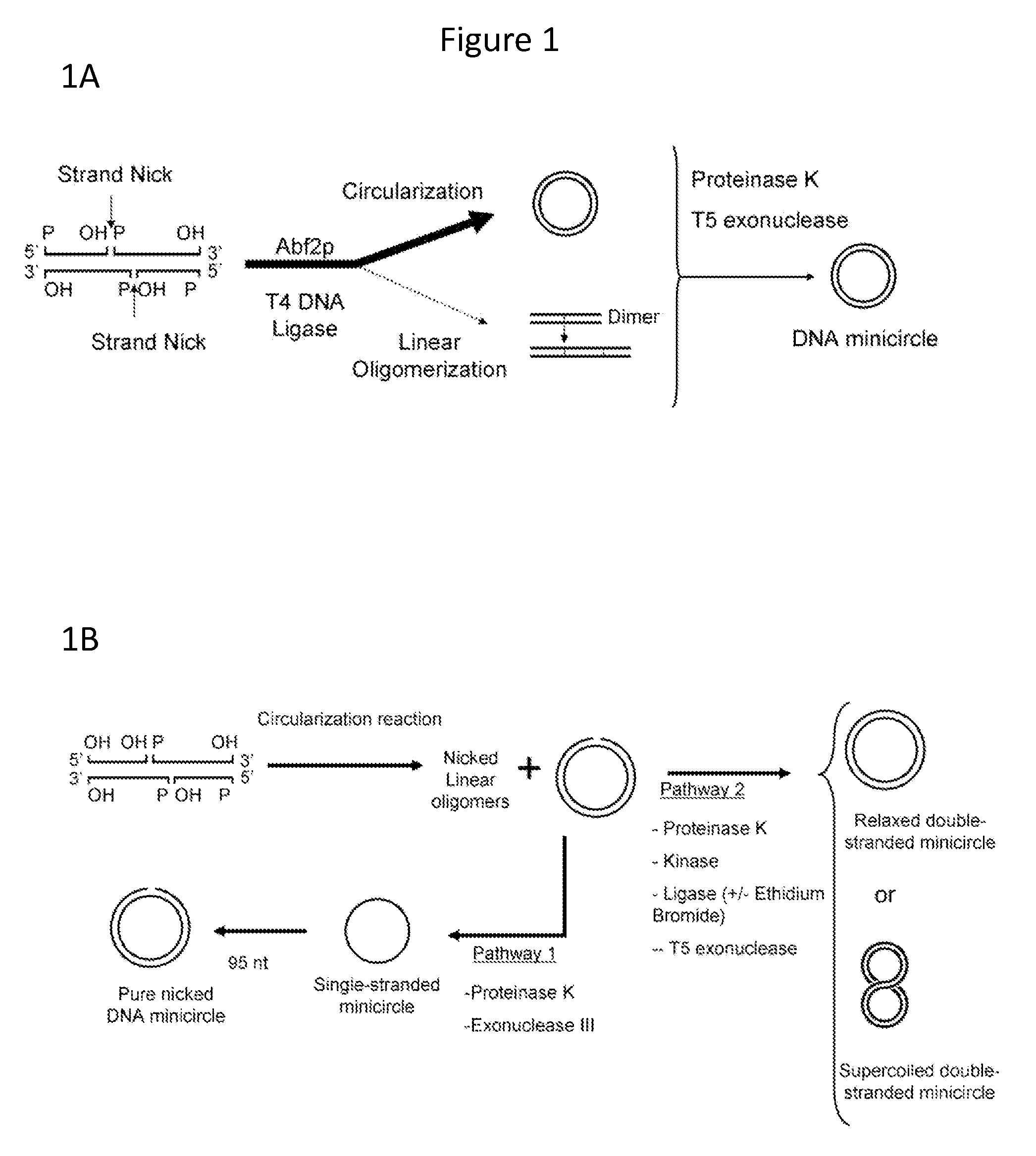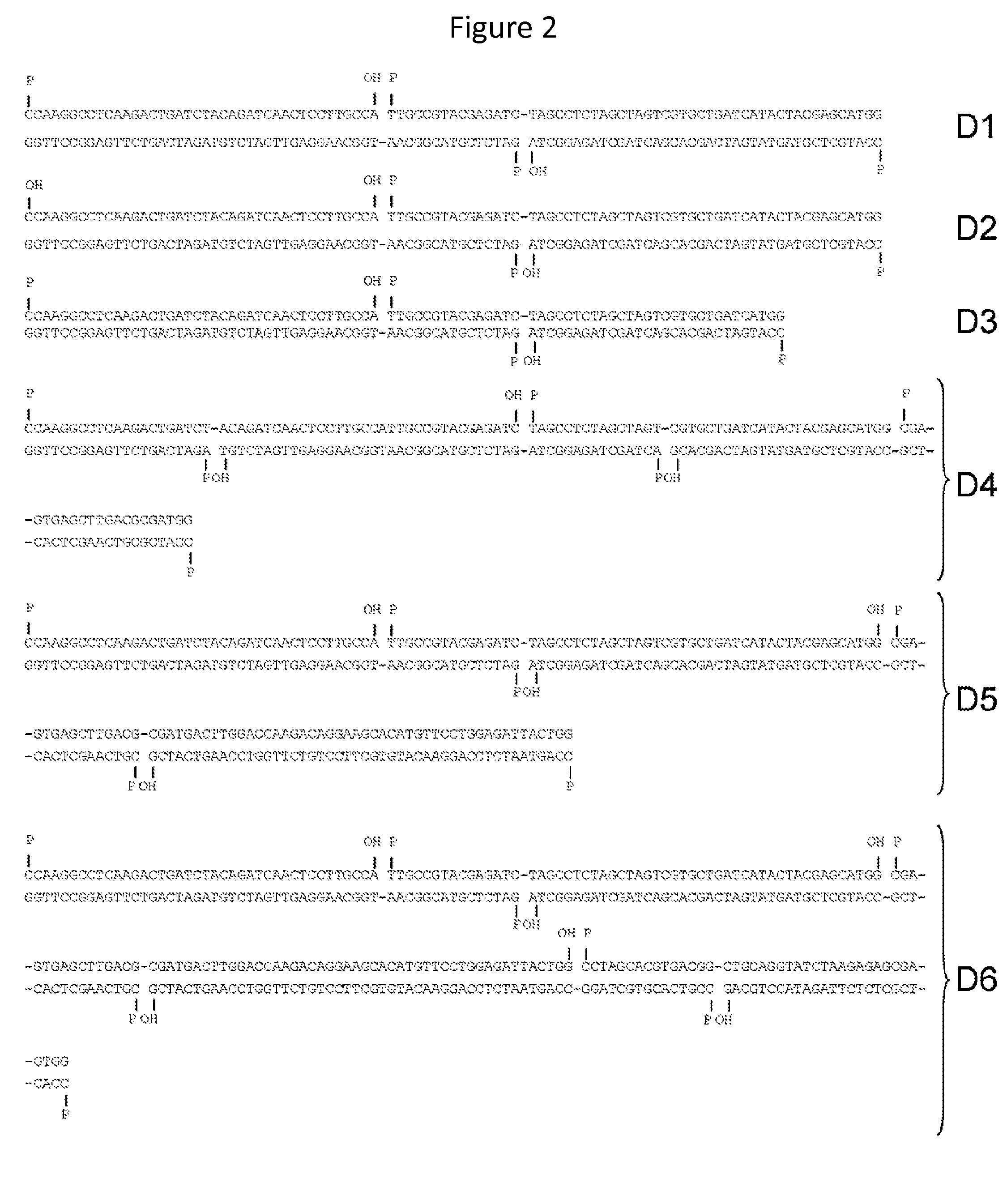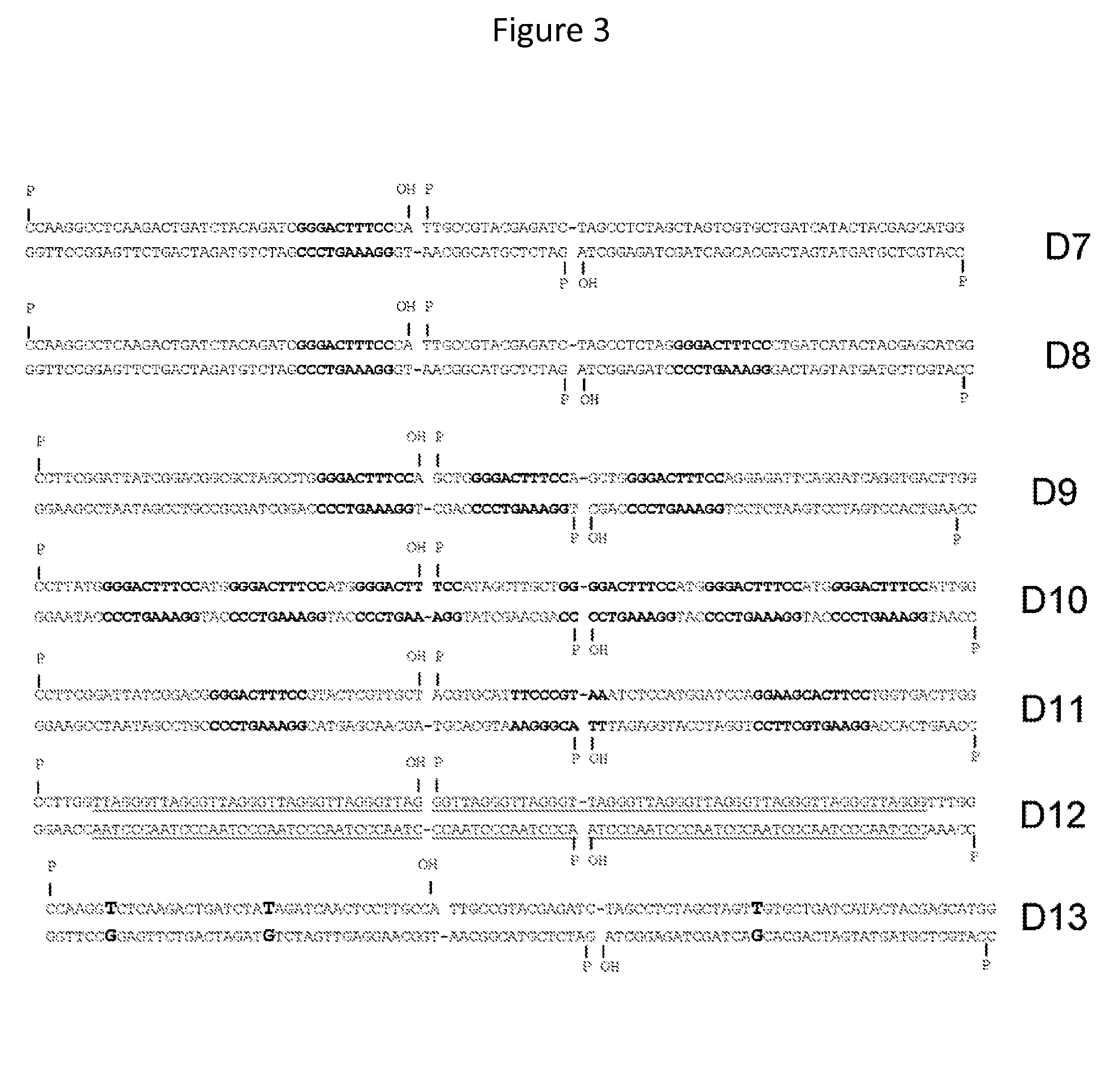In vitro production of DNA minicircles comprising less than 250 base pairs
a technology of dna minicircles and base pairs, which is applied in the field of in vitro production of dna minicircles, can solve the problems of limited versatility of this approach for introducing customized dna sequences, inability to direct production of chemically functionalized minicircles, and inability to produce cellulo minicircles
- Summary
- Abstract
- Description
- Claims
- Application Information
AI Technical Summary
Benefits of technology
Problems solved by technology
Method used
Image
Examples
examples
1—Material and Methods
[0167]Oligodeoxynucleotides used here were synthesized by phosphoramidite method with or without modifications as indicated in the text and were purchased from Eurogentec (Seraing, Belgium). Proteinase K, T4 DNA ligase, T4 polynucleotide kinase and Exonuclease III were purchased from Fermentas and T5 exonuclease was from New England Biolabs. Full length NF-κB p50 and Fpg were bought from Promega and New England Biolabs, respectively. BaI31 nuclease and streptavidin were respectively from New England Biolabs and Sigma-Aldrich and 700 bp ladder DNA molecular weight marker was from Fermentas.
[0168]p-ET15 b derived vector containing Abf2p gene was kindly provided by F. Culard (Centre de biophysique moléculaire, CNRS, Orleans, France); the plasmid was used for transformation of BL21 (DE3) pLysS (Novagen) with 34 μg / ml of chloramphenicol and 30 μg / ml of kanamycin. The strain transformed was grown at 37° C. with shaking to an A600 of 0.5. The culture was induced with ...
PUM
| Property | Measurement | Unit |
|---|---|---|
| flow rate | aaaaa | aaaaa |
| pH | aaaaa | aaaaa |
| concentration | aaaaa | aaaaa |
Abstract
Description
Claims
Application Information
 Login to View More
Login to View More - R&D
- Intellectual Property
- Life Sciences
- Materials
- Tech Scout
- Unparalleled Data Quality
- Higher Quality Content
- 60% Fewer Hallucinations
Browse by: Latest US Patents, China's latest patents, Technical Efficacy Thesaurus, Application Domain, Technology Topic, Popular Technical Reports.
© 2025 PatSnap. All rights reserved.Legal|Privacy policy|Modern Slavery Act Transparency Statement|Sitemap|About US| Contact US: help@patsnap.com



